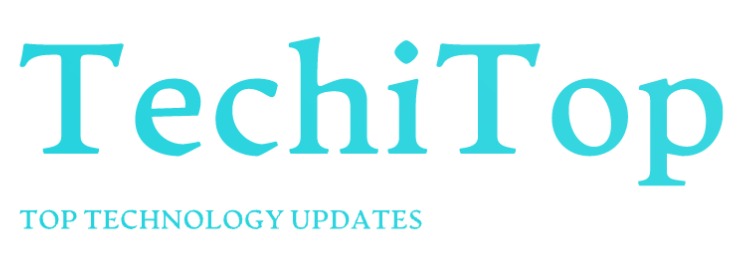Accelerate Innovation by Shifting Left FinOps, Part 2
In the previous part, we explored the foundational principles of shifting left in FinOps to accelerate innovation. This second part delves deeper into practical strategies, tools, and best practices for effectively implementing this approach within an organization.
1. Leveraging Automation for Cost Efficiency
Automation is a cornerstone in shifting FinOps left. It ensures that financial considerations are embedded early in the development cycle. Here’s how to implement it:
a. Automated Cost Monitoring and Alerts:
- Tools: AWS Cost Explorer, Azure Cost Management, Google Cloud’s Cost Management tools.
- Benefits: Real-time tracking of cloud expenses with automated alerts for unexpected spikes or anomalies.
b. Continuous Integration and Continuous Deployment (CI/CD) Pipelines:
- Tools: Jenkins, GitLab CI, CircleCI.
- Integration: Incorporate cost analysis scripts into CI/CD pipelines to assess the financial impact of new code before deployment.
c. Automated Tagging and Resource Management:
- Tools: CloudHealth, CloudCheckr, native cloud tagging policies.
- Benefits: Ensures that all resources are appropriately tagged for cost tracking and accountability, simplifying cost allocation and reporting.
2. Embedding FinOps into Development Processes
To truly shift left, financial accountability needs to be part of the development culture.
a. Developer Training and Awareness:
- Training Programs: Regular workshops and training sessions on cloud cost management and FinOps principles.
- Knowledge Sharing: Internal documentation and knowledge bases that outline best practices for cost-efficient coding and resource usage.
b. Cost-Driven Development Metrics:
- KPIs: Track metrics such as cost per transaction, cost per feature, and overall cost efficiency.
- Dashboards: Implement dashboards (e.g., Grafana, Power BI) to visualize these metrics in real-time, making them accessible to both developers and management.
c. FinOps Champions:
- Role Definition: Identify and empower FinOps champions within development teams to advocate for cost-conscious development practices.
- Responsibilities: Regularly review code and architectures for cost efficiency, mentor peers, and serve as liaisons between FinOps and development teams.
3. Collaborative Budgeting and Forecasting
Incorporating financial forecasting into the development process ensures that budgets are aligned with actual project needs and objectives.
a. Iterative Budget Planning:
- Agile Budgeting: Adopt agile budgeting practices that allow for iterative updates based on project progress and changing requirements.
- Collaboration Tools: Use tools like Jira, Confluence, or Asana for collaborative budget planning and tracking.
b. Scenario Analysis and Forecasting:
- Simulation Tools: Utilize tools like Cloudability, Apptio, or native cloud cost management solutions to run cost simulations based on different usage scenarios.
- Decision-Making: Enable informed decision-making by forecasting the financial impact of scaling applications, introducing new features, or changing cloud providers.
c. Cross-Functional Teams:
- Structure: Form cross-functional teams that include members from finance, development, and operations.
- Objective: Foster a collaborative environment where financial insights are shared early and throughout the development lifecycle.
4. Real-Time Cost Optimization
Real-time cost optimization is essential for maintaining financial health in a dynamic cloud environment.
a. Dynamic Resource Allocation:
- Auto-scaling: Implement auto-scaling policies to match resource usage with demand, avoiding over-provisioning.
- Spot Instances: Utilize spot instances and reserved instances where appropriate to reduce costs.
b. Continuous Cost Reviews:
- Review Cadence: Establish a regular cadence for cost reviews, such as weekly or bi-weekly, to quickly identify and address inefficiencies.
- Tools: Employ tools like CloudHealth, Spot.io, or native cloud cost analysis tools to facilitate these reviews.
c. Cost Anomaly Detection:
- Machine Learning: Use machine learning models to detect cost anomalies and predict future spending patterns.
- Alerting Systems: Integrate these models with alerting systems to notify relevant teams of potential cost overruns in real-time.
5. Cultivating a Cost-Conscious Culture
Building a culture that prioritizes cost efficiency requires continuous effort and reinforcement.
a. Transparency and Accountability:
- Financial Transparency: Provide transparent financial reporting to all team members, making cost data accessible and understandable.
- Accountability: Establish accountability mechanisms where teams are responsible for their cloud spending.
b. Incentivizing Cost Savings:
- Recognition Programs: Implement programs to recognize and reward teams or individuals who contribute to significant cost savings.
- Gamification: Introduce gamification elements, such as leaderboards or cost-saving competitions, to encourage engagement and innovation.
c. Continuous Improvement:
- Feedback Loops: Create feedback loops where lessons learned from cost-saving initiatives are shared and incorporated into future projects.
- Innovation Forums: Hold regular forums or hackathons focused on developing new strategies for cost efficiency and innovation.
Conclusion
Shifting left in FinOps is not merely a technical shift but a cultural transformation. By embedding financial accountability into the early stages of the development lifecycle, leveraging automation, fostering cross-functional collaboration, and continuously optimizing costs, organizations can significantly accelerate their innovation while maintaining financial health. The journey towards mature FinOps requires ongoing effort, but the rewards in terms of efficiency, cost savings, and competitive advantage are well worth it.

